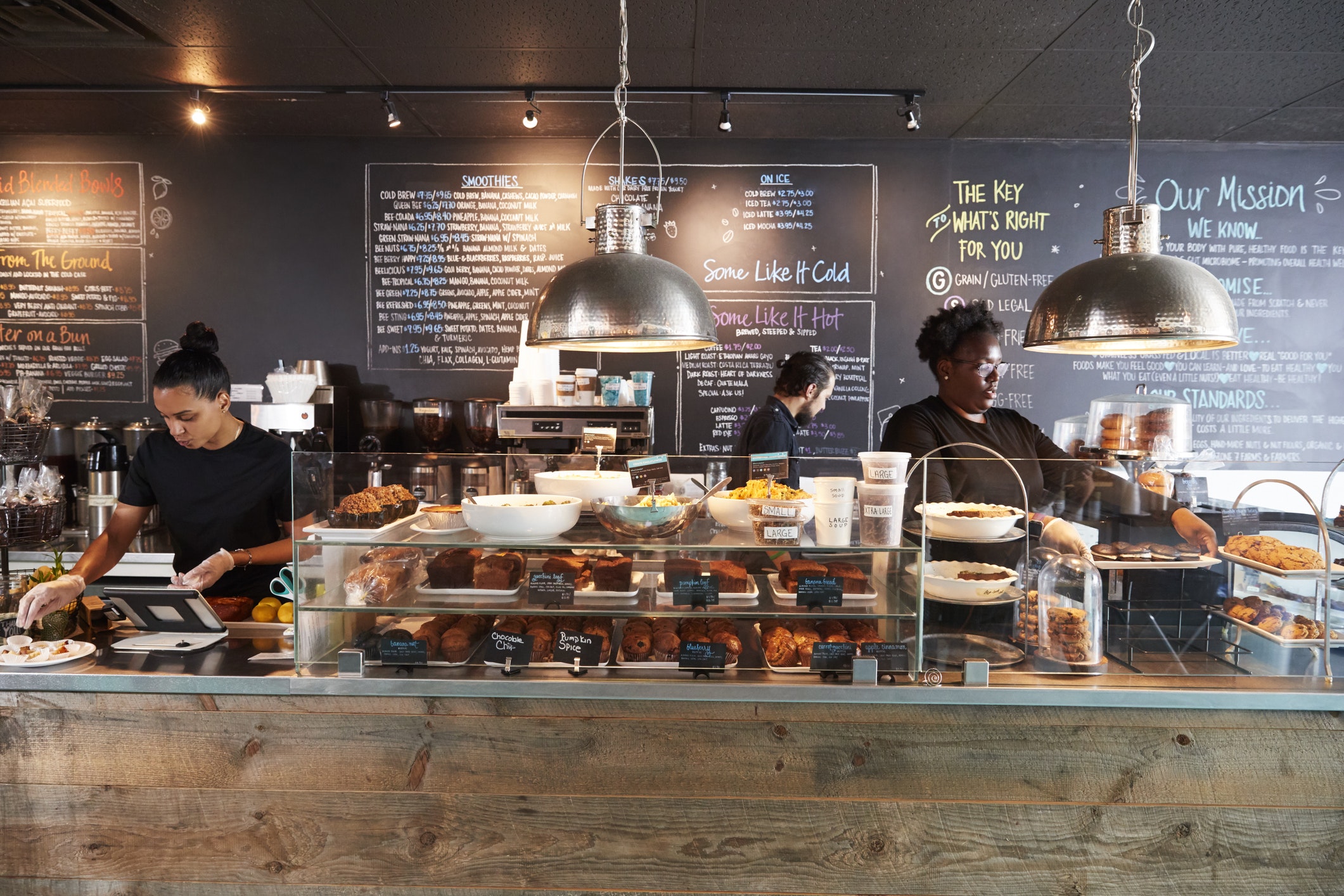Brooklyn Coffee Shops-- Discover the Best Coffee in the Borough
Wiki Article
Discovering the Best Developing Techniques for Perfect Coffee
Exploring the different developing methods for coffee can substantially boost one's appreciation for this complicated drink. Each technique, from the durable richness of the French Press to the thorough precision of pour-over brewing, offers a distinct flavor experience that provides to diverse tastes buds.
French Press Developing Strategy
The French Press brewing strategy is a timeless approach that enables coffee enthusiasts to draw out abundant and full-bodied flavors from their coffee premises. Brooklyn Coffee Shops. This approach, likewise called a press pot or plunger pot, entails soaking coarsely ground coffee in warm water prior to separating the grounds via a steel or nylon mesh filterTo prepare coffee making use of a French Press, start by including coarsely ground coffee to the carafe, usually at a ratio of 1:15 coffee to water. After steeping, firmly push the plunger down to divide the premises from the brewed coffee.
The outcome is a durable and aromatic cup that keeps the natural oils from the coffee grounds, giving an unique appearance and flavor profile. This developing method is favored for its simplicity and capacity to showcase the special features of various coffee beans. The French Press welcomes testing with work size, steep time, and coffee-to-water ratios, permitting users to customize their brewing experience.
Pour-Over Approach Explained
Pour-over developing is a meticulous approach that allows coffee fans to exercise control over every aspect of the developing procedure, causing a dynamic and tidy mug of coffee. This technique involves putting warm water over coffee premises in a filter, enabling the water to remove tastes gradually as it goes through.To begin, it is necessary to pick high-grade, fresh roasted coffee beans, ideally ground to a medium-coarse uniformity. The selection of water temperature level is essential; preferably, it needs to be between 195 ° F and 205 ° F(90 ° C to 96 ° C) to optimize extraction without scalding the coffee.

The complete mixture time should range from three to 4 minutes, depending on the desired strength and taste profile. The pour-over approach, cherished for its quality, supplies a nuanced mug that highlights the coffee's distinct qualities, making it a favored among purists and fanatics alike.
Espresso Basics
Espresso brewing stands in comparison to the pour-over technique, providing a focused shot of coffee that showcases vibrant flavors and abundant crema. This developing strategy depends on compeling warm water via finely-ground coffee under high stress, typically around 9 bars. The result is a tiny, extreme quantity of coffee that offers as the structure for various espresso-based drinks, such as macchiatos, cappuccinos, and lattes.
Trick components of an effective espresso shot include work dimension, tamping pressure, water temperature, and removal time. The work size must be fine to promote ideal removal, while consistent tamping guarantees also water flow with the coffee premises. Water temperature level must ideally range between 90 to 96 levels Celsius to stay clear of under-extraction or over-extraction, which can cause unwanted flavors.
Espresso equipments been available in numerous types, from hand-operated bar machines to automated systems, each dealing with different skill degrees and choices. Grasping the art of coffee developing can be a gratifying experience, permitting coffee enthusiasts to appreciate the intricacy and depth of tastes that this approach can create. Ultimately, the coffee works as a flexible base for many coffee creations.
Cold Mixture Process
Cold brew coffee has gotten popularity for its smooth, mellow flavor account and reduced acidity, making it an attractive option for several coffee drinkers. The cold mixture process stands out from conventional brewing techniques, great post to read utilizing a steeping method that removes tastes over an extended duration without warmth.
When steeping is total, the coffee is filtered to remove the premises, causing a focused mixture that can be watered down with water or milk prior to serving. The low brewing temperature level lessens level of acidity and resentment, creating a wonderful and rejuvenating drink.
Cold mixture can be served over ice, combined into smoothie mixes, or appreciated directly, making it versatile for various preferences. With its one-of-a-kind taste and smooth coating, the chilly brew process has strengthened its area among the favorite developing techniques for coffee lovers.
Aeropress Benefits
While numerous brewing techniques have their distinct qualities, the Aeropress attracts attention for its adaptability and ease official source of use. This innovative device permits coffee fanatics to explore numerous brewing criteria, such as grind size, water temperature, and soaking time, enabling the production of a tailored mug of coffee tailored to specific choices.
One significant advantage of the Aeropress is its transportability. Portable and light-weight, it is an excellent choice for tourists and outdoor enthusiasts who want a top quality mixture on the go. Furthermore, the Aeropress is created from resilient products, guaranteeing it holds up against the roughness of travel.
The brewing procedure itself is remarkably uncomplicated, making it easily accessible for both amateur and seasoned coffee drinkers - Coffee Shops. With a fast brewing time of approximately one to two mins, the Aeropress creates a concentrated coffee similar to espresso, permitting a rich taste account
Furthermore, the Aeropress is easy to tidy, needing marginal upkeep contrasted to standard brewing techniques. Its flexibility reaches various coffee styles, consisting of cold mixture and even nitro coffee, making it a beneficial addition to any coffee enthusiast's arsenal. In general, the Aeropress integrates top quality, adaptability, and convenience, making it a top option for coffee enthusiasts.
Conclusion
The expedition of various coffee brewing approaches reveals distinct qualities and flavor accounts that cater to diverse choices. Engaging with these brewing strategies fosters a deeper understanding of coffee's complexity and possibility for satisfaction.To prepare coffee using a French Press, begin by including coarsely ground coffee to the pitcher, commonly at a proportion of 1:15 coffee to water.Coffee developing stands in contrast to the pour-over method, providing a focused shot of coffee that showcases vibrant tastes and rich crema. Understanding the art of coffee brewing can be a fulfilling experience, enabling coffee enthusiasts to appreciate the complexity and deepness of tastes that this technique can generate. Its adaptability extends to numerous this contact form coffee styles, consisting of chilly brew and even nitro coffee, making it a beneficial addition to any coffee enthusiast's arsenal.The exploration of various coffee developing approaches discloses distinct attributes and taste profiles that provide to varied preferences.
Report this wiki page